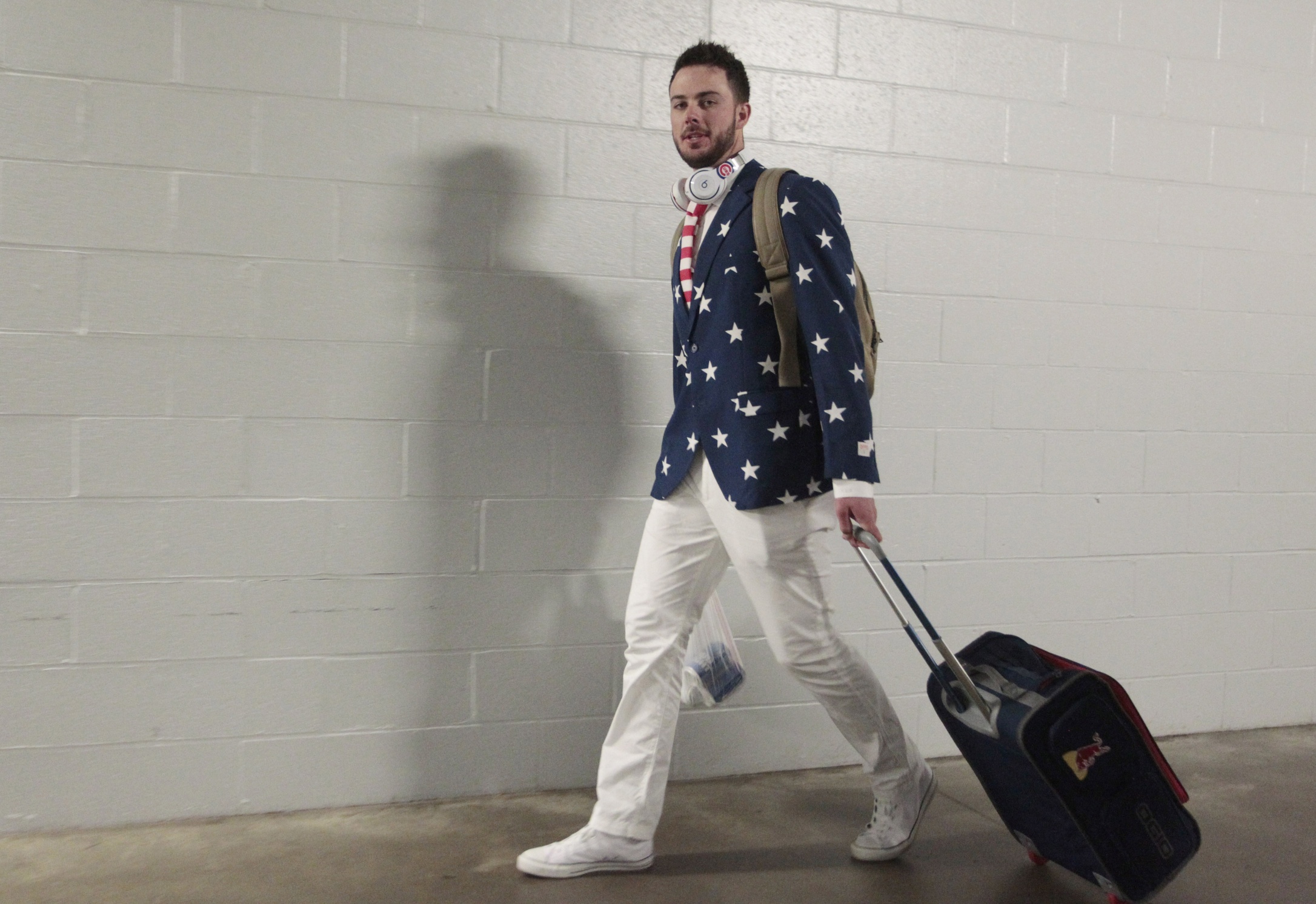The Cubs have been one of the best teams in Major League Baseball to start 2016. That point isn’t debatable, nor is it a revelation. The pitching has been arguably the best in the majors, and the defense is elite. The offense has outscored everyone (they are tied for first in the majors in runs scored despite having played fewer games than 22 other teams).
The model under which the Cub hitters operate is to work long at-bats and see pitches—lots of pitches. Maddon wants his team to make the opposing starters work so they can get them out of the game and get into the soft underbelly of the front end of the bullpen.
The approach is clearly working, but is it working as planned? Are the Cubs making hay off of long and middle relievers because they forced the starters to throw an inordinate number of pitches? In an effort to answer this question, I compiled the line of the average starting pitcher who has opposed the Cubs in 2016. This pitching line represents the average performance of each of the 25 starters who have opposed the Cubs in 2016. The numbers are below.
| IP | ER | ERA | WHIP | H | BB | SO | HR | RS | K/9 | BB/K |
| 5.02 | 3.12 | 5.6 | 1.51 | 4.84 | 2.72 | 4.72 | 0.64 | 1.28 | 8.47 | 0.58 |
So what can opposing starters expect from their outing versus the Cubs? Firstly, they can expect their day to be done early. Opposing starters are averaging only 5 innings pitched when facing the Cubs, and no opposing starter has gone longer than 7 innings.
The interesting part of that stat, though, is that the average pitch count for opposing pitchers is 91.28, indicating that they are being lifted as much for ineffectiveness, as for overuse. In fact, in only 4 games out of 25 has the opposing starter thrown more than 100 pitches.
Secondly, they can expect long at-bats. A starting pitcher can expect to strike out nearly five Cubs per start, but also can expect to walk 0.58 batters for every strikeout obtained. Starters can take some comfort in knowing that this ratio is lower than that which the Cubs are posting for whole-game performance (0.69 BB/K—first in MLB).
Thirdly, an opposing starter can expect to spend his five innings of work with lots of Cubs on base, and that several of those base runners will score. Cub hitters are averaging nearly three walks and five hits off of each starter they have faced, accounting for 3.12 runs per pitcher start.
Finally, and most importantly, an opposing starting pitcher can expect to lose. In 80 percent of the Cubs’ games this year, the opposing starter has earned either a loss (68 percent of the time), or a no-decision (12 percent). Only two of the Cubs’ 19 wins were earned by gaining the lead after the starter gave way to the bullpen, which tells us that the Cubs are taking the lead early, and maintaining it late.
What, then, does this data tell us that we didn’t already know? It says that the approach of working long counts is effective on its own merits as a method for scoring runs. Runs are being scored not by hanging around until a pitcher essentially disqualifies himself due to pitch count, but by waiting for good pitches to hit, and taking walks when they are offered.
This patient, disciplined approach has worked because it has been constant, relentless, and adopted by every hitter from 1-9. One would think that the Cubs’ success in scoring runs would be indicative of a high BABIP or a high batting average with runners in scoring position, but in fact the opposite is true.
Batting Average on Balls in Play for the Cubs (full season, full game) ranks 15th of the 30 MLB teams— the definition of average (or, at least, of mean). The team’s batting average with runners in scoring position ranks 18 of 30 and checks in at .244, indicating that the team is not benefitting from a fluky success rate that can be expected to show some regression. Instead, they have been succeeding at rates that certainly appear sustainable and may have room for improvement.
This patient, OBP-focused approach has been even more effective due to the ability of the defense and pitching staff to prevent runs being scored by the other team. Specifically, an opposing starting pitcher can expect to receive only 1.28 runs in support of his start, while allowing 3.12 earned runs on average.
When aggregated, then, the Cubs have a +46 run differential when considering their performance versus starting pitchers only. This figure, if it were reflective of whole-game performance, would be second in all of MLB behind only the Cubs actual full-game run differential of +89.
Putting all of things together, it is clear that the Cubs are winning not because they weather the storm until a starting pitcher exits, but instead by winning the individual at-bats more often than any other team has been able to do.
They score early, they score often, and they keep the opponents’ pitchers under pressure. Working from the stretch in high stress situations tires a pitching staff. One would think that this approach may have a cumulative effect over the course of a long season—that opponents’ bullpens will be taxed more heavily by the Cubs than by other teams. In any event, the approach of Cub hitters seems to be repeatable, sustainable, and somewhat immune to the impact of a slumping bat. If Cub hitters can maintain the discipline they have shown to this point, opposing pitchers may find themselves checking the calendar to see if they can avoid pitching against the Chicago Cubs. If they’re not already.
Lead photo courtesy Charles LeClaire—USA Today Sports.

Freakin awesome piece, Jeff! Slump-proof . . . sustainable . . . lovable.